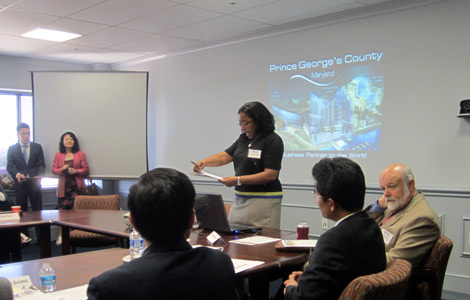Tourism threatening Antarctica
Updated: 2014-06-19 07:08
By Agence France-Presse in Sydney (China Daily)
|
||||||||
|
As the number of tourists to the Antarctic Peninsula grows, scientists warn that the level of protection for its native wildlife and plants is inadequate. Sarah Dawalibi / Agence Francepresse |
Number of visitors has grown from fewer than 5,000 a year in 1990 to 40,000
Antarctic scientists warned on Wednesday that a surge in tourists visiting the frozen continent was threatening its fragile environment and called for better protection.
Tourist numbers have exploded from less than 5,000 in 1990 to about 40,000 a year, according to industry figures, and most people go to the fragmented ice-free areas that make up less than 1 percent of Antarctica.
A growing number of research facilities are also being built, along with associated roads, fuel depots and runways, in the tiny ice-free zones.
It is these areas which contain most of the continent's wildlife and plants, yet they are among the planet's least-protected, according to a study led by the Australian government-funded National Environmental Research Programme and the Australian Antarctic Division.
"Many people think that Antarctica is well protected from threats to its biodiversity because it's isolated and no one lives there," said Justine Shaw from the NERP in the study published in the journal PLoS Biology.
"However, we show that there are threats to Antarctic biodiversity.
"Most of Antarctica is covered in ice, with less than 1 percent permanently ice-free," she added.
"Only 1.5 percent of this ice-free area belongs to Antarctic Specially Protected Areas under the Antarctic Treaty System, yet ice-free land is where the majority of biodiversity occurs."
Five of the distinct ice-free eco-regions have no protection at all while all 55 of the continent's protected areas are close to sites of human activity.
Steven Chown, from Monash University's School of Biological Sciences, another collaborator in the study, said the ice-free areas contain very simple ecosystems due to Antarctica's low species diversity.
This makes its native wildlife and plants extremely vulnerable to invasion by outside species, which can be introduced by human activity.
"Antarctica has been invaded by plants and animals, mostly grasses and insects, from other continents," he said.
"The very real current and future threats from invasions are typically located close to protected areas.
"Such threats to protected areas from invasive species have been demonstrated elsewhere in the world, and we find that Antarctica is, unfortunately, no exception."
The study said the current level of protection was "inadequate by any measure" with Shaw saying more was needed to guard against the threat posed by the booming tourism industry.
" (We need) to protect a diverse suite of native insects, plants and seabirds, many of which occur nowhere else in the world," she said.
"We also need to ensure that Antarctic protected areas are not going to be impacted by human activities, such as pollution, trampling or invasive species."
Antarctica is considered one of the last frontiers for adventurous travelers.
Most travel by sea, some paying in excess of $20,000 for a luxury cabin in the peak period from November to March. There is also a healthy market for sightseeing flights.
Most Viewed
Editor's Picks

|

|

|

|

|

|
Today's Top News
Xi's ROK visit 'a milestone': US envoy
Beijing, Hanoi vow to act on friction
Chinese stories, Hollywood thrills
Huawei gets insurance help in Europe
Wal-Mart to triple efforts on food safety
US captures Benghazi suspect in raid: Pentagon
TV series aims to 'decode' China
More tie the knot with spouses from overseas
US Weekly

|

|

















